Soft and chewy glutinous rice balls filled with a sweet black sesame filling, these tang yuan are a traditional Chinese treat enjoyed in a sweet ginger soup!
Jump to:
To celebrate the year of the rabbit, 2023, we're making these tang yuan in the shape of a rabbit!
This year is a special year for me because I was born in 1999, the year of the rabbit, and this year I turn 24. To celebrate we're making this black sesame tang yuan in the shape of cute bunnies!
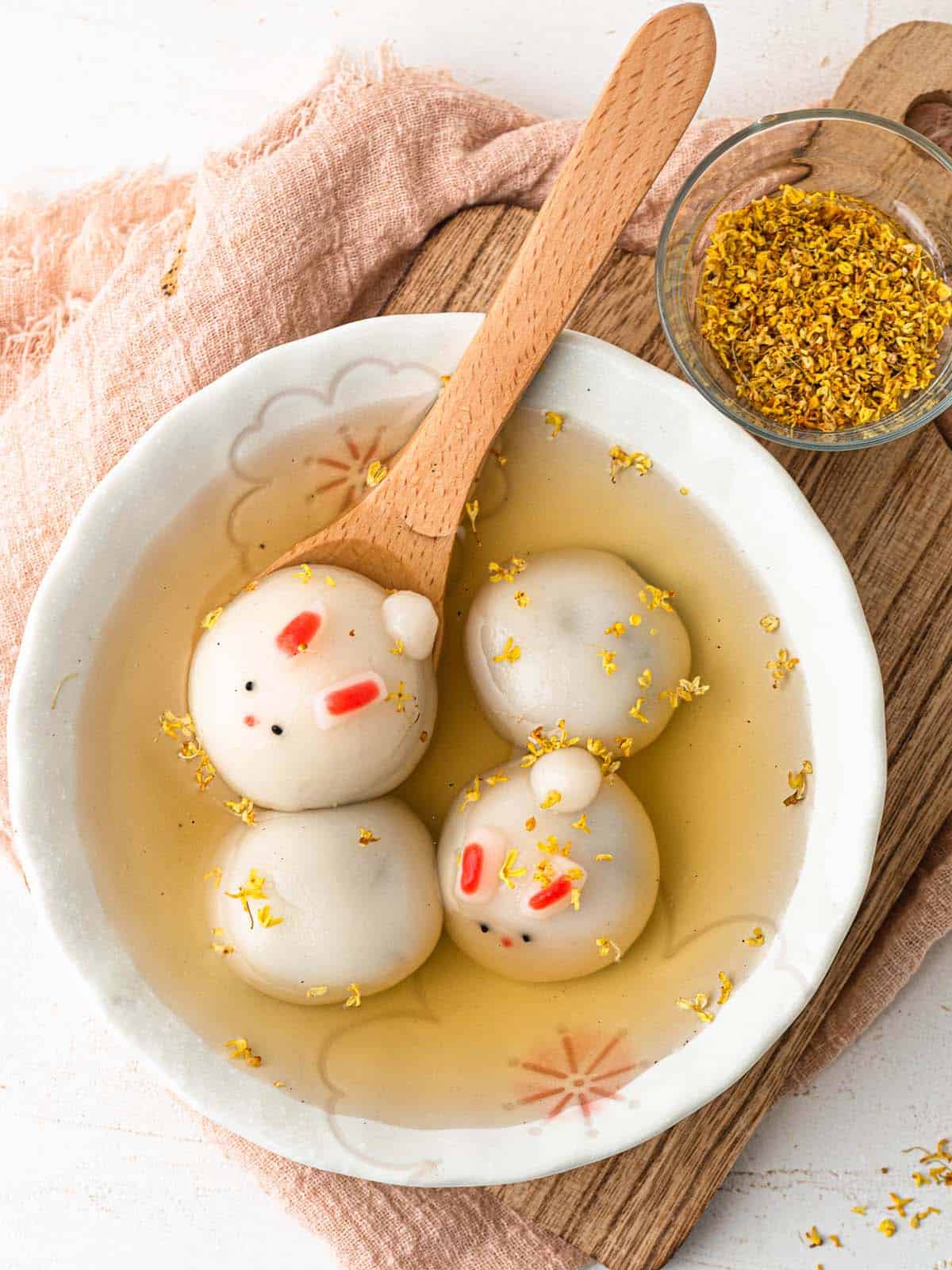
What is tangyuan?
Tang yuan (汤圆), also known as Yuan Xiao (元宵) are a traditional Chinese glutinous rice dumplings filled with a lava-like filling and typically served in soup.
The rice ball is soft and chewy with a mochi-like texture and the filling ranges from red bean paste to peanut butter. However, the most common tang yuan filling is black sesame paste. Its nutty and fragrant flavor works so well with the chewy skin. And when you bite into the tang yuan the filling should ooze right out as a liquid.
There are several different ways to serve it, but they're always served in soup. I grew up eating tangyuan served in a sweet fermented rice soup. But there are so many other options including red bean soup or this sweet ginger soup that I'm showing you how to make today.
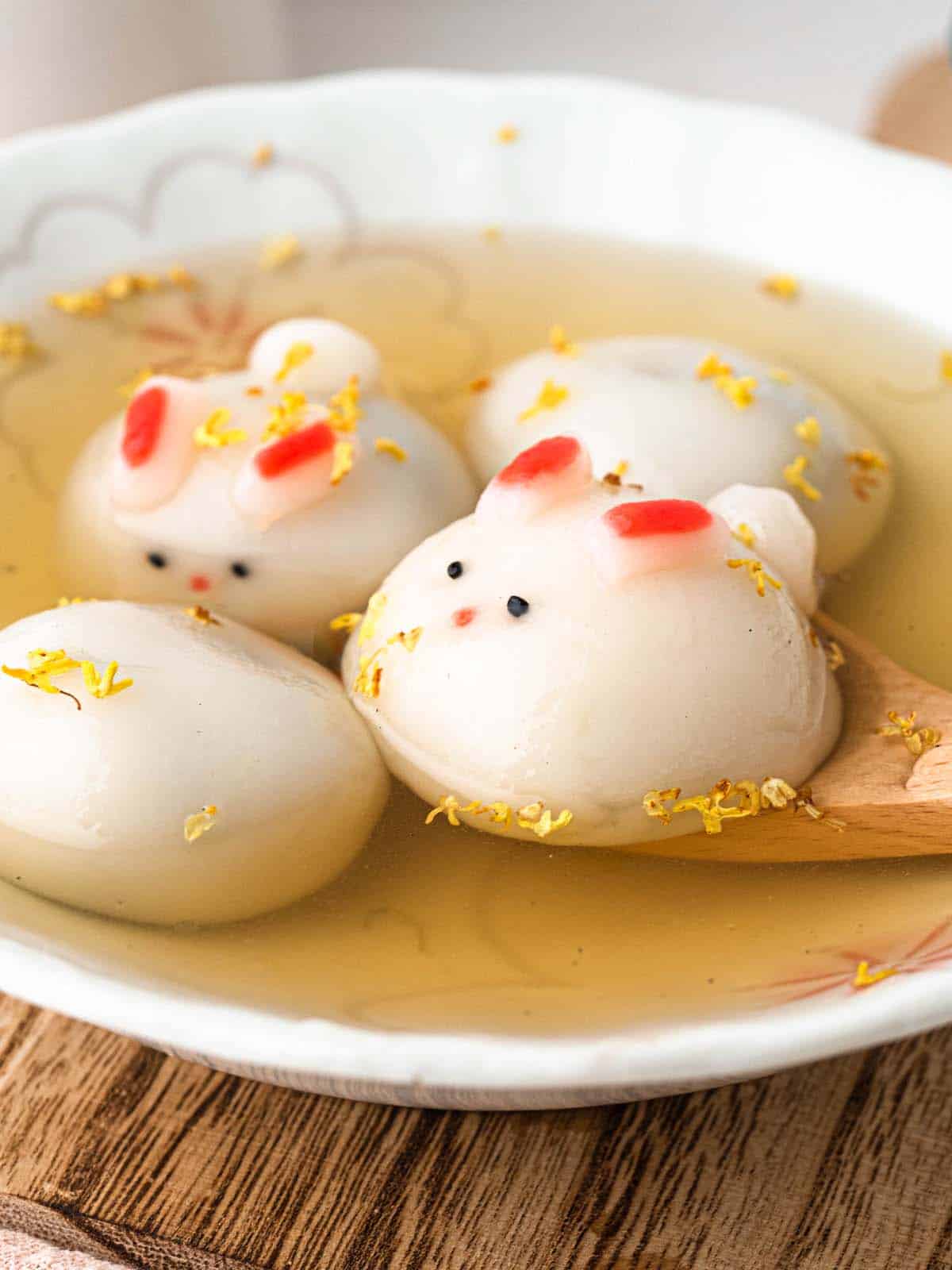
When do you eat tang yuan?
Tang yuan can be eaten all year round however it has a special place on the 15th day of the lunar new year where we celebrate the winter solstice festival (dongzhi 冬至) or lantern festival (yuanxiao jie 元宵节)!
This is the last day of Chinese new year and celebrations are held where lanterns are lit and performances are held! This is a time when we let go of the past year and bring in the new one with lots of good luck and fortune.
This Chinese dessert is eaten during this time because of their auspicious meaning. The roundness of tangyuan symbolizes completeness and reunion. It represents family reunion and togetherness, so it's a tradition to eat it with your family during this time!
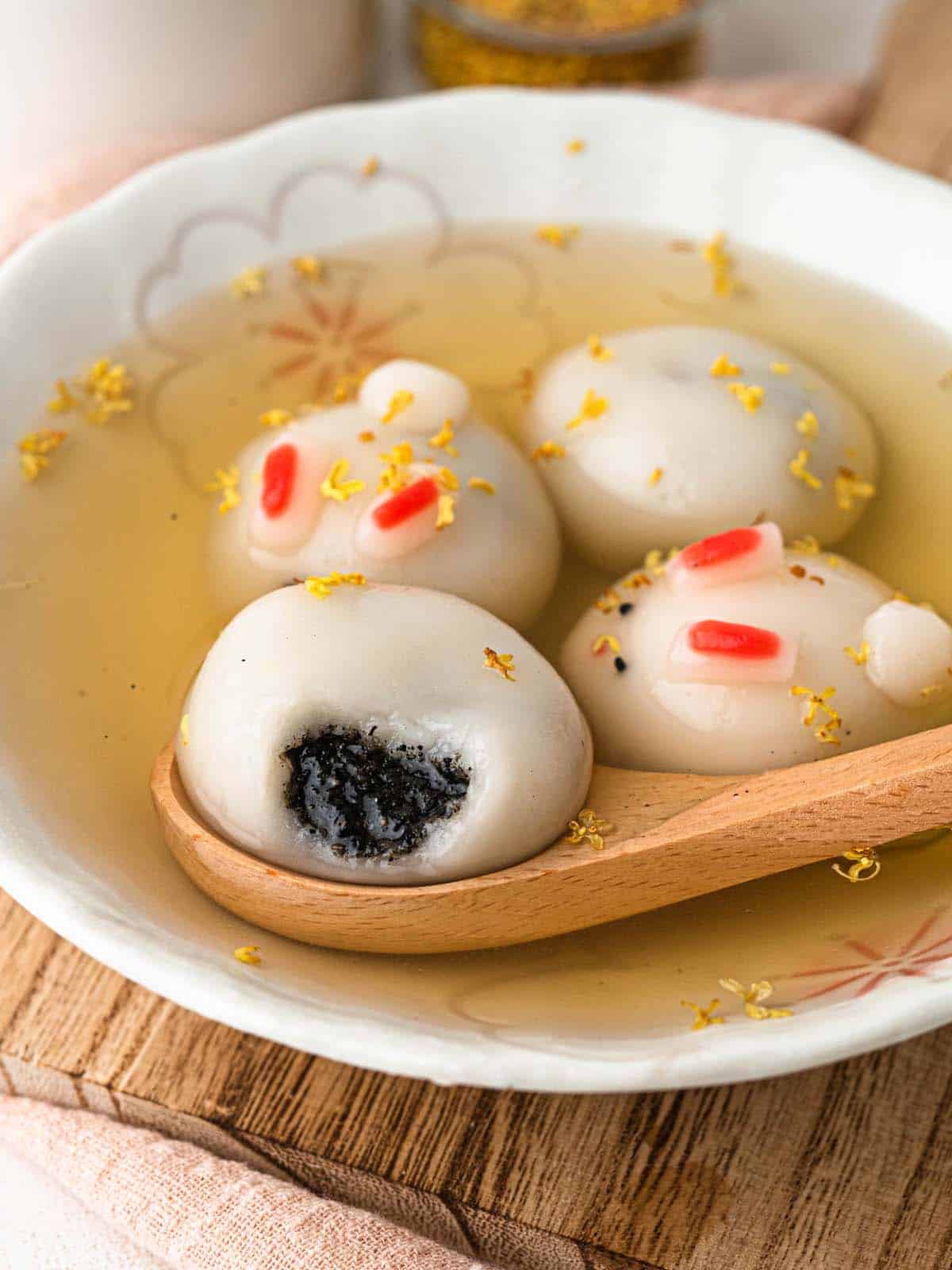
Ingredients
Black Sesame Filling
- Black sesame seeds: I like to use toasted black sesame seeds as they have a nuttier, toasted taste. If yours aren't toasted put them in a dry frypan over medium heat and stir constantly for about 5 minutes, they should crackle and smell fragrant.
- Granulated sugar: Aka white sugar. Sugar is needed to sweeten the filling!
- Unsalted butter: Butter holds the sesame seeds together so we can roll them into balls. It also melts once the tang yuan have boiled to create that lava-like filling
Dough
- Glutinous rice flour: Aka sweet rice flour. Make sure you use glutinous rice flour as this gives the tang yuan that chewy consistency.
- Warm water: Make sure you use warm, not hot water. Hot water can cook your glutinous rice flour when cooked causing it to get sticky.
Sweet Ginger Soup
- Brown sugar: I like to Asian brown sugar slabs, which can be found in most Asian grocery stores as they have the flavor I grew up eating. If you can't find those regular brown sugar or rock sugar works perfectly. You can adjust the sweetness to your personal taste.
- Fresh ginger: Ginger adds warmth and dimension to the soup! You can omit it if you prefer.
- Dried osmanthus: These little yellow flowers are traditionally served in the soup, and can be found in your local Asian grocer. Once again totally optional and can be left out if you can't find them.
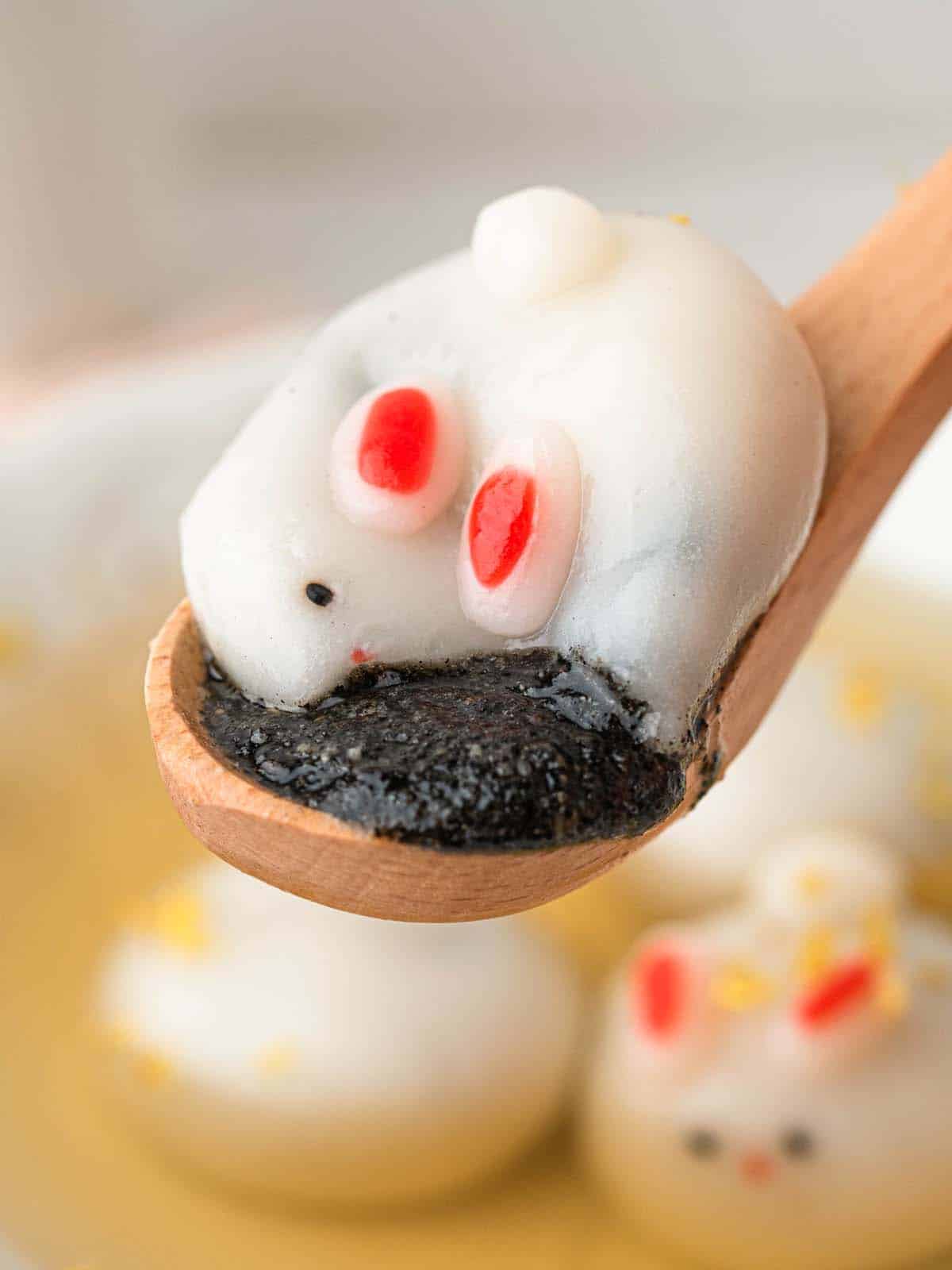
Frequently Asked Questions
Can I freeze tangyuan?
Yes, you can! You can freeze the unboiled tang yuan. When you are ready to serve just drop them in a pot of boiling water and boil until they float to the surface. Serve as normal!
How long do tangyuan last?
Cooked tang yuan are best served right after they've been boiled. At that point, they are the freshest, softest, and chewiest. The filling is also hot and lava-like. If you leave them for too long they will start soaking up too much of the soup and eventually break and get too soft.
Only cook as many as you can finish, then freeze or refrigerate the uncooked tang yuan until you are ready to eat. The ginger soup will hold for several days in the fridge.
How should I serve tangyuan?
Tangyuan is always best served in soup! There are a couple of different ways to serve them the first being this sweet ginger soup.
Another one of my favorite ways is to serve it with sweet fermented rice, aka jiuniang (酒酿). Which is made from sweet glutinous rice. Just add a teaspoon of it along with some sugar to your bowl and top with the tang yuan and some of the cooking water. Delish!
Always serve fresh for the best texture and flavor!
Why did my tangyuan burst when being cooked?
There are a couple of reasons why your tangyuan burst while cooking:
- The skin of the dumpling was too thin, causing it to burst while being boiled
- The black sesame filling hadn't been fully enclosed before boiling, causing it to leak
- The tangyuan had been cooked for too long, this causes the skin of the dumpling to get very soft and fragile
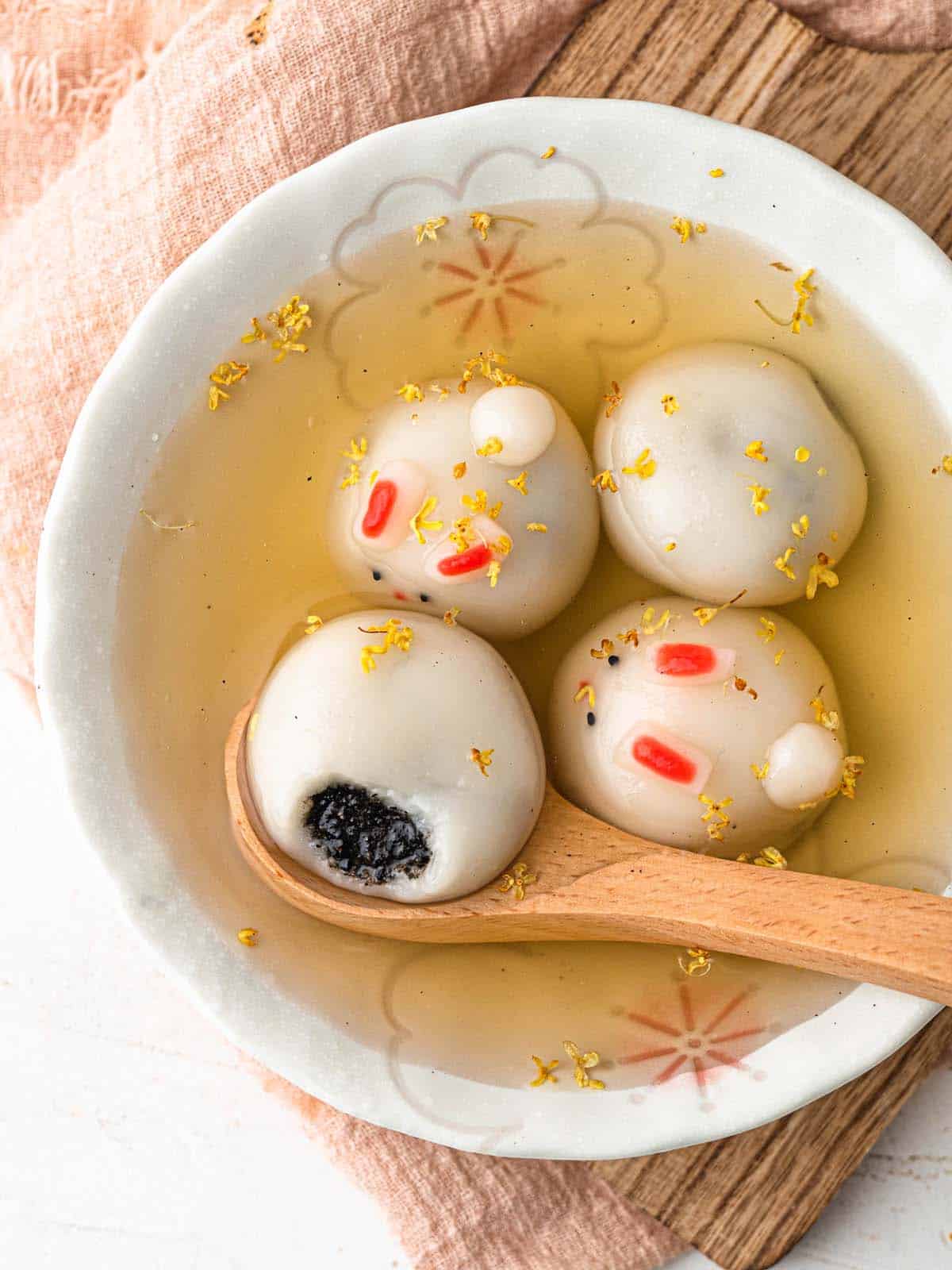
Let's Get Cooking
If you liked this recipe make sure to leave me a comment and rating down below, I would love to know how you went. Also don't forget to tag me on Instagram @catherine.desserts so I can see and share your desserts.
Follow me on facebook, pinterest, youtube and tiktok for more of my baking creations and updates! Until next time... happy caking!
Print📖 Recipe
Tang Yuan Recipe
Soft and chewy glutinous rice balls filled with a sweet black sesame filling, these tang yuan are a traditional Chinese treat enjoyed in a sweet ginger soup!
- Prep Time: 45 minutes
- Cook Time: 10 minutes
- Total Time: 55 minutes
- Yield: 4 serves (approx 12 balls) 1x
- Category: Asian Dessert
- Method: Easy
- Cuisine: Chinese
Ingredients
Black Sesame Filling
- 50g Black sesame seeds (⅓ cup)
- 50g White sugar (¼ cup)
- 60g Unsalted butter (¼ cup), room temperature
Dough
- 130g Glutinous rice flour (1 cup)
- 120ml Warm water (½ cup)
Sweet Ginger Soup
- 45g Brown sugar (¼ cup)
- 480ml Water (2 cups)
- 3 slices of fresh ginger
- Dried osmanthus, optional
Instructions
Black Sesame Filling
- Combine the black sesame and sugar in a food processor and blitz until it forms a fine powder
- Add the butter and blitz until it's smooth
- Transfer the filling to a bowl, cover, and chill for 30-60 minutes
- Once firm scoop ½ tablespoon scoops of filling and roll into balls
- Place in the fridge to chill while you prepare the dough
Dough
- Combine the glutinous rice flour and water in a bowl and mix until a shaggy dough forms
- Knead the dough until smooth, adding more glutinous rice flour or water until it's smooth and soft (it should have the texture of an earlobe)
- Take 1 tablespoon of dough and cover the rest with a piece of cling wrap
- Roll it into a ball and use your thumb to create a cavity in the centre of the ball
- Place a ball of sesame filling in the center and smoothen the edges of the dough over the black sesame filling to enclose it
- Roll the ball between your palms to smoothen the edges and form a smooth ball
- Repeat with the remaining dough and filling
- (To make the bunny color 1 teaspoon of the dough pink. Roll a small ball of white dough into a tail and attach it to the back of a tang yuan with some water. Form two small logs with white dough and top them with a bit of pink for the ears. Stick black sesame seeds into the dough for the eyes and a small dot of pink dough for the nose!)
Sweet Ginger Soup
- Combine the sugar, water, and ginger in a small saucepan and bring to a boil
- Reduce it to a simmer and cook for 5 minutes, occasionally stirring until the brown sugar has completely dissolved
- Divide the soup among your serving bowls
- Bring a large pot of water to a boil over medium-high heat and add the tang yuan
- Stir gently to prevent the tang yuan from sticking to the bottom of the pot
- Once the tang yuan floats to the surface of the water boil for another minute
- Remove the tangyuan and divide them among your serving bowls
- Top with osmanthus flowers and serve

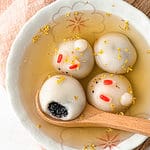
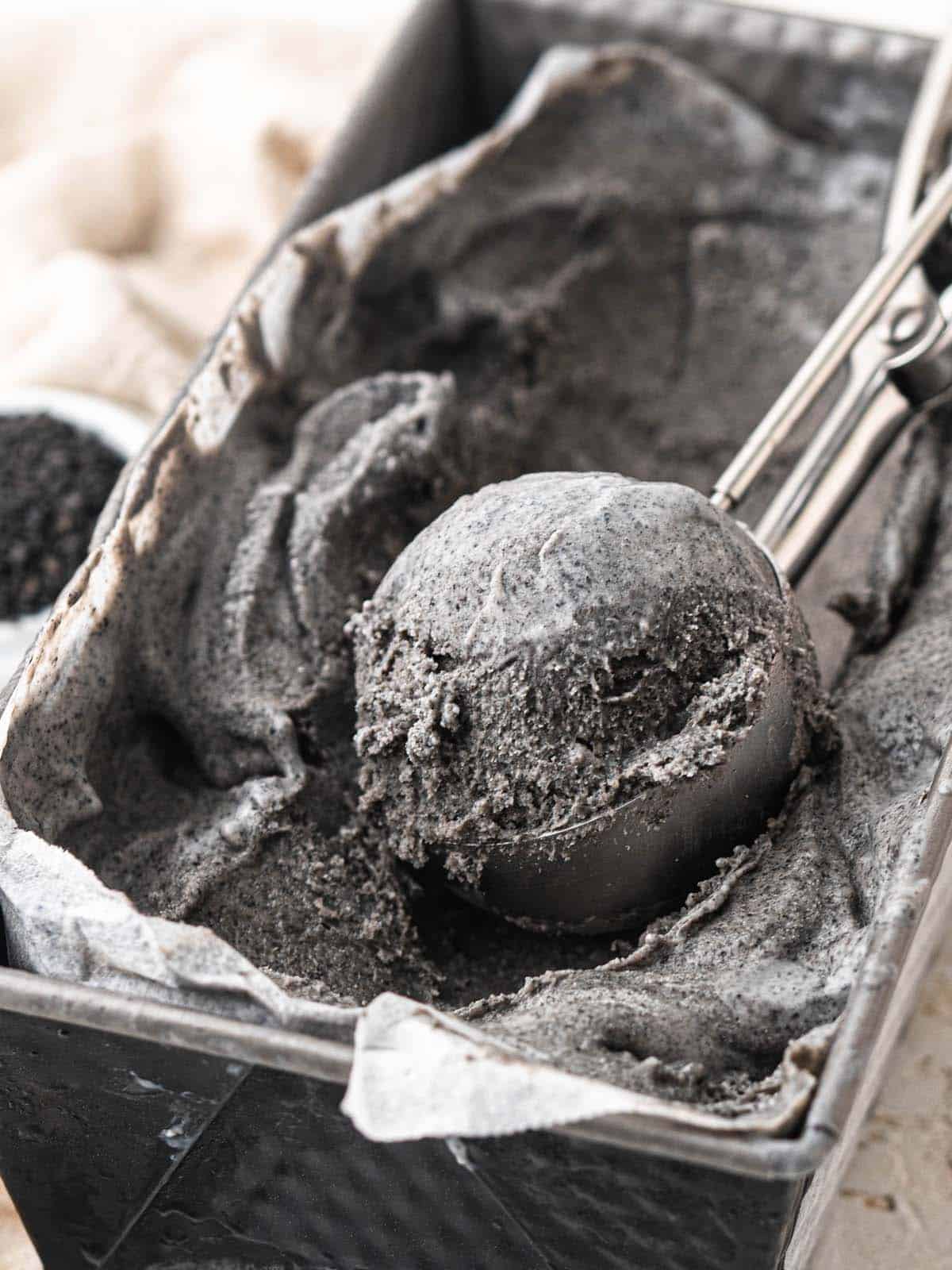
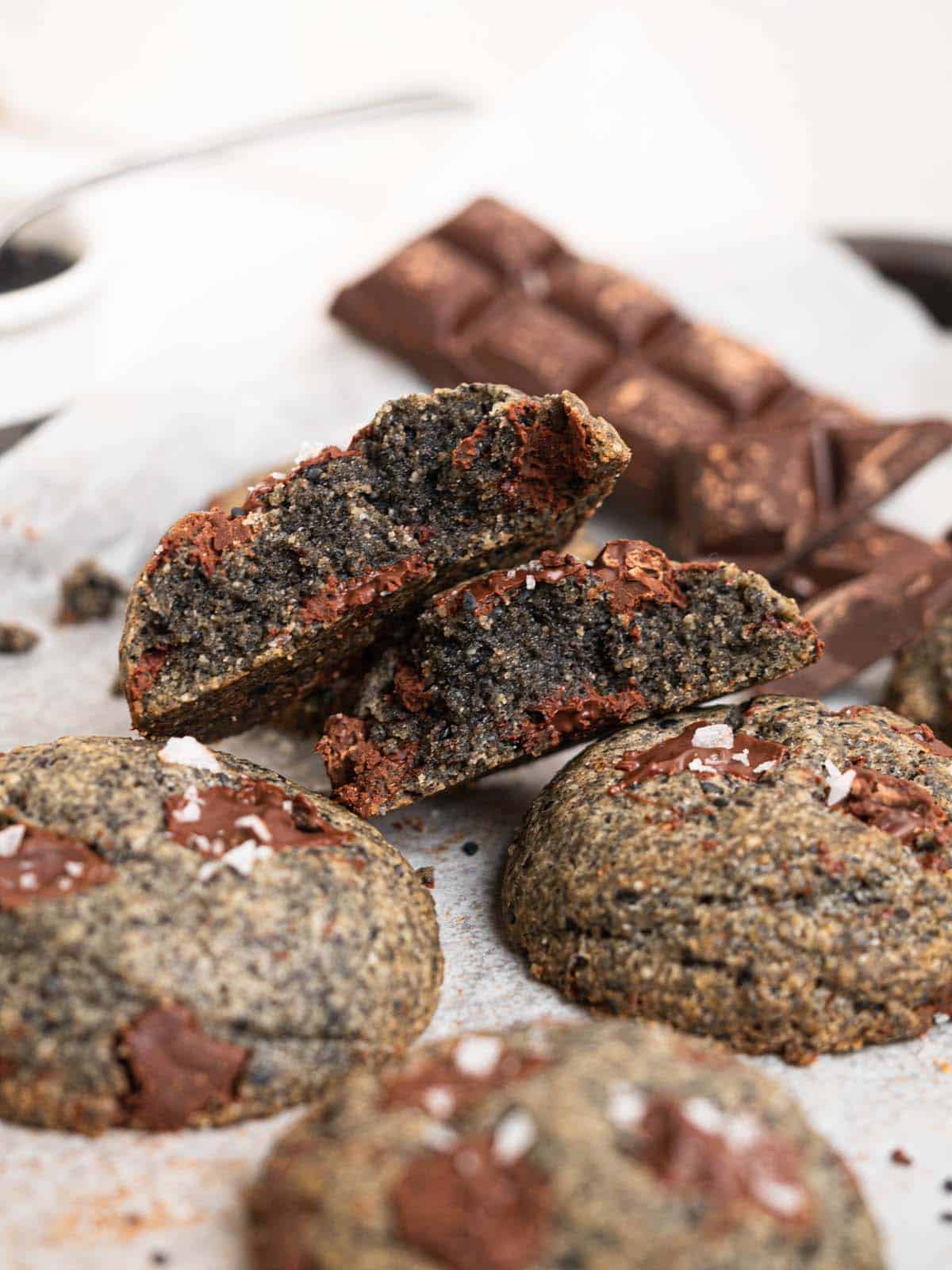
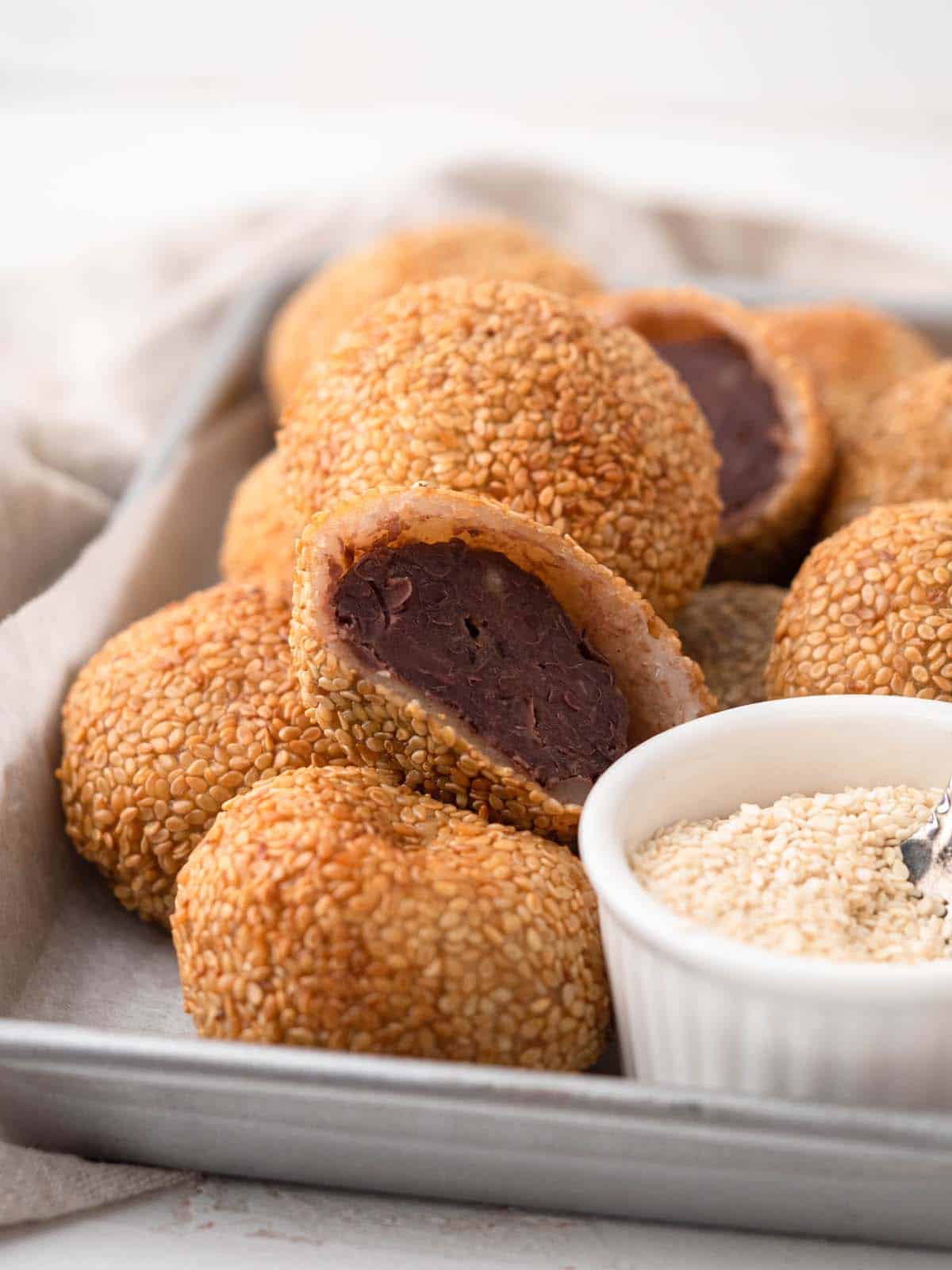


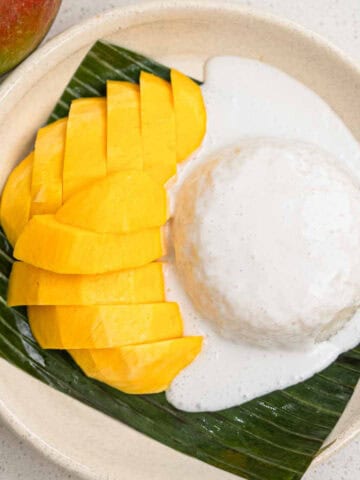

Comments
No Comments